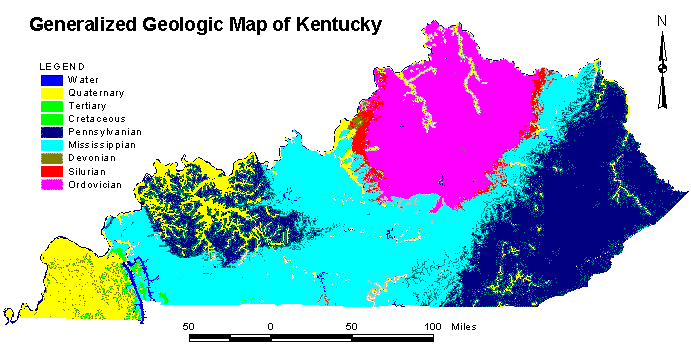

KGS Home > Geology of Kentucky
Strata of Quaternary Age

Quaternary (1.6 million years ago to today) sediments are the youngest deposits in Kentucky and are mostly restricted to the floodplains of rivers and creeks. They are shown in yellow on the geologic map. Quaternary sediments consist mostly of silts, sands, gravel and clay eroded from Paleozoic rocks exposed at the surface in Kentucky. However, some also contain rocks that were transported into parts of northern Kentucky and along the Ohio River Valley by meltwaters from glacial ice that covered much of eastern America north of the present-day Ohio River during the first part of the Quaternary (called the Pleistocene Epoch or Ice Age). Many varieties of igneous (e.g., granite, basalt), metamorphic (e.g., quartzite, schist) and sedimentary rocks not normally occurring in Kentucky were deposited in the Quaternary sediments and as isolated rocks and boulders, which are called erratics. Bones of Ice Age mammals including mammoths and mastodons were also deposited in these Quaternary sediments, such as at Big Bone Lick State Park in Boone County, northern Kentucky. Wind-blown deposits of silt called loess are found in western Kentucky. The silt was blown in from glacial outwash areas to the west (e.g. Nebraska) where sediments produced and transported by the glaciers were deposited in front of the glaciers by meltwater streams.
Other related topics of interest: